Sustrans, the sustainable transport group, has been around for the better part of 40 years now, and its handiwork is everywhere.
The little blue signs you see denoting cycle routes… those ones with small red number boxes on them? Those are the work of Sustrans. They represent the National Cycle Network, the series of cycle routes, greenways and other cycle-friendly routes that criss-cross the UK. Not all are connected, but many have interesting railway links.
And that link between Sustrans and the railways is more significant than it first seems. Take the Spen Valley Greenway, once a part of the Lancashire and Yorkshire Railway’s line to Dewsbury and Low Moor. It used to have a heavy and frequent freight service, hauled latterly by British Rail ‘WD’ 2-8-0 and 2-10-0 heavy freight locomotives, famed for their strength, power, and austere wartime looks. The famous A4s streaked along it as well, although nowadays the quickest thing you’ll see on it is a cyclist at full tilt.
Part of Sustrans’ plan is to make greenways more of a viable transport option. This aim has been echoed in recent political debate, where funding for walking and green travel is being considered as a priority ahead of more funding for the roads.
Sustrans is also developing its Greener Greenways project, which aims to increase the biodiversity of the routes by using volunteers and community efforts (along with staff) to clear up, trim, plant and irrigate where necessary. Some signs are already appearing, such as wicker fences making artificial hedgerows, and the Bat Lighting in Earlsheaton Tunnel (more on that later).
Meanwhile, the Connect 2 Project aims to take the disparate parts of the Sustrans network (those not connected to longer stretches or major centres) and join them up, making them more attractive as well as more popular and populated.
This is the plan at the Spen Valley Greenway - it is hoped that the Greenway will eventually connect to the cycle routes of Huddersfield and eventually up to Bradford and the route north towards Cullingworth, near Keighley.
RAIL photographer Paul Bigland and myself find out more about Sustrans’ work while on a guided cycle trip along the Spen Valley Greenway. We are met at Leeds railway station by Huw Davies, director of the Sustrans National Cycle Network, and Mike Babbitt, infrastructure manager for the Yorkshire and Humber region. Then we drive to Low Moor, where the line still runs between Halifax and Bradford, although all the once extensive freight facilities have vanished.
The Spen Valley Greenway is a route between the railway line at Low Moor (now part of an industrial estate) and Dewsbury to the south. It is a metalled path that winds its way along the former railway line and across the M62 motorway and A58.
Some of the relics of its railway past loom large along the route. Several bridges are still in situ, as are a milepost or two. Some parts of the line have been altered - the path winds artificially to make it more interesting. Here and there it visibly veers away from the original railway formation, leaving potential alternative routes to explore.
It costs £30,000 a year to maintain the Spen Valley Greenway, with half of that figure provided by Kirklees Council. A warden looks after the route, clearing litter and reporting any major damage to Sustrans and the local authority.
And he’s clearly doing a good job. As we cycle along, I notice just how many of the bridges and former railway structures are kept in very good order. No weeds, little damp or water damage, and they all seem to have been repointed or kept very clean.
Is there any animosity between Sustrans and the Railway Heritage Trust? (The RHT is a non-governmental heritage management organisation, with responsibility for promoting and trying to preserve railway heritage. It especially concerns itself with railway-owned buildings.)
“No, why should there be?” Davies looks perplexed. The reason he looks confused is that he has previously worked with the RHT, and works with the Trust now on Sustrans routes that involve pieces of either railway property or RHT property.
Davies is the chief executive of Railway Paths Ltd, which has stewardship over the hundreds of miles of UK railway paths, and then allows their transfer to Sustrans. It calls itself a “sister charity”, and is independent of Sustrans. Examples of RHT structures on Railway Paths routes includes Torksey viaduct (over the River Irwell) and Lumb viaduct (in Lancashire), which is actually a Sustrans route.
Generally, Sustrans preserves any historically significant buildings or features along its routes. The intention is to make them all unique and attractive - an anonymous path through some trees won’t cut the mustard for Davies.
For example, at one point, communications upgrades were being carried out on the Spen Valley Greenway, and an old colour light signal was removed. When he realised this, Babbitt demanded to know where it had gone. The telecommunications company responsible sourced a new colour light signal, which has now been erected at the site of the original (albeit virtually hidden in undergrowth and tree cover).
This attention to detail and integrity may surprise some, but Sustrans isn’t there to rip out railway heritage and infrastructural remains - it’s there to get people using what are (and have always been) transport routes with huge potential.
There is a shorter spur off the Greenway that leads through Heckmondwike to Rawfolds (near Cleckheaton). At one time, this was the London and North Western Railway’s line from Leeds, but it is now a cycle and walking route.
The Sustrans-maintained section has tarmac, information boards and well-maintained bridges, and looks like what you would expect a well-tended walking route to look like. But the parts that have yet to be adapted look very sad. What used to be Heckmondwike station is now a small housing estate, packed into a cutting, with the shade of the road overbridge throwing dampening shadows across back yards. The overbridge itself is strewn with litter, and leads out to an unfenced and ill-kept trackbed, covered with waste.
Over the road to the south, part of the trackbed known as 48ft Cutting is being earmarked for filling in and building over. Although this is potentially a disastrous obstacle to a line potentially needed for future re-opening, Sustrans is fine with the idea.
“As long as it’s done properly, development can be a good thing,” says Davies. “It creates jobs, investment in the community. It can bring the community together.”
That’s certainly true. A development of this type has the potential to bridge (literally) the gap between two communities. The two sides of the cutting would be brought together over a new piece of land, and new homes created on what is currently green space - potentially an environmental concern, but not one that will destroy a particularly mature green area. Sustrans would then potentially be able to provide cycling and walking routes through the development to join up to the National Cycle Network (NCN).
One of the lesser-known lines shut as a result of Dr Beeching’s report is the line from Bradford Exchange to Wakefield via Batley. This line is now connected via cycle and footpath network to the Spen Valley Greenway, and is the next stop on our guided tour. On it is the 179-yard Earlsheaton Tunnel, which scythes through the hills between Dewsbury and Ossett to the east.
An indication that funding is secure is the informative sign at the tunnel’s eastern end telling visitors about Earlsheaton station, now a heavily landscaped and green bowl south of the town. And lighting in the tunnel itself prevents anti-social behaviour (it is even special lighting so as not to disturb the resident bat colony).
The £1.3 million engineering project to rebuild the structure involved Kirklees Council (which has a dedicated Cycling Officer), Sustrans’ Connect 2, and the Department for Transport’s Local Sustainable Transport Fund. Wakefield to the east is still tantalisingly close, but as yet has no direct, easy NCN route to Dewsbury - something the enterprising and indefatigable Sustrans plans to rectify.
At Dewsbury, it’s back into the car for a short journey to Cullingworth, where we pick up the next section of the Spen Valley Greenway.
Here is the former Great Northern Railway (GNR) route south from Keighley to Queensbury (and thence west to Halifax and east to Bradford). This line is only partly joined up to the NCN, and there is a long way to go before the whole section is part of the network. Well Head Tunnel needs clearing, paths need re-cutting through private land, and much political wrangling will be likely.
We start at Cullingworth, once a village served by the GNR, and head south to the spectacular Hewenden Viaduct, built in 1883 and standing 123 feet tall.
As we stop for a photo opportunity, a man approaches and asks if we have something to do with the path. Davies steps forward and asks how he can help. The man says there is a narrow gap in the fence a way back, and his puppy and other dogs are in danger of falling about 20 feet to the road below.
Davies turns to Babbitt: “We’ll get your people onto it.” He turns back to the man, and promises: We’ll look into it for you.” The man smiles cheerfully and strolls off with his dog.
Is that something you get a lot of?
“Yeah.” Babbitt seems almost resigned, then offers a deeper insight. “If it’s done politely, it’s fine. Most are. You do get some who say ‘Oh, you people at Sustrans, you’ve made my life hell with this path’. But they’re very much in the minority. The majority of people we’ve seen do all seem happy using the path. ”
Many users are elderly people or families with young children. It seems to have been well received by nearly everyone.
“This is where the path ends,” Babbitt points to a hillock at the far end of the viaduct. “The landowner won’t let us through his land, so we’re putting in a temporary route down there. We can walk it if you like.”
The cutting beside the hillock has been blocked with waste and greenery. Why is the farmer blocking such a positive plan?
“Basically, he wants a lot of money,” says Babbitt.
Settlements for such routes have been known to run into hundreds of thousands of pounds. Is there a solution?
“Hopefully he’ll settle,” says Davies. If not, a Bridleway Creation Order is a potential method for ensuring the path is completed, although Babbitt points out that this is a more drastic step to be taken only if negotiations break down between Sustrans, the local authority and the landowner.
Many of the routes we have travelled on are near or connect to active railway lines, with the potential that some (or all) might one day be needed to serve as railway lines again. Sometimes a line will have potential space adjacent to it that could accommodate a greenway or cycle route. Babbitt sees such potential on a daily basis: “I see it on my way into work on the train and think: ‘oh, can we build a cycle path there’?”
On a different scale, this has already happened in North Wales. The 2ft gauge Welsh Highland Railway has been partly built on the former standard gauge formation from Caernarfon to Llanberis. As a result, the narrow gauge line has space set aside for part of the NCN. The railway is now cheek by jowl with the route as far as Llanwnda, where the NCN route continues on the former LNWR line to Afon Wen.
It can take years of convincing, planning, spending and resolving local objections to build a fully fledged greenway. Who knew that so much political wrangling went into something as genteel as a cycle route?
“A colleague once described a project to me,” Davies explains, as we stroll to the path once again. “He said: ‘It’s taken me ten years to plan this project, and ten weeks to build it.”
The level of organisation, planning and expertise is amazing. The men we’ve been with today have planned and built dozens of structures, paths, greenways and buildings in their respective careers, and their job is not nearly over yet.
Sustainable transport is a huge and increasing concern, now of such significance that RAIL’s National Rail Awards recognise sustainability (RAIL 783). Sustrans is all about getting different methods of green transport to work together as a cohesive whole. Rail, cycling and walking go together hand in glove, and that’s exactly how it should be.
- This feature was published in RAIL 786 on October 28 2015

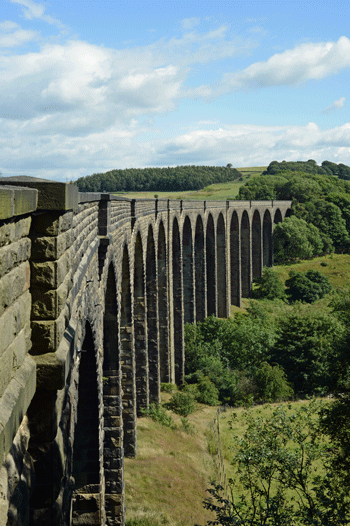
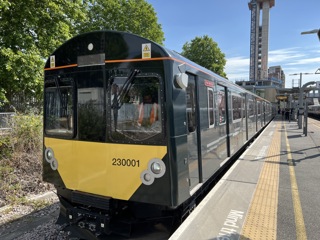
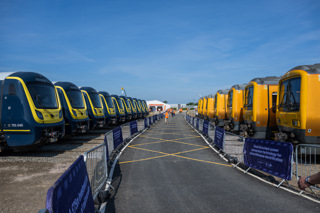
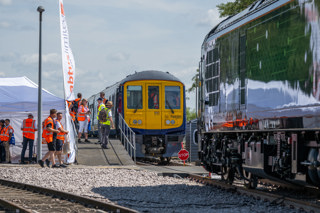
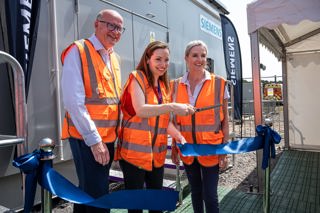
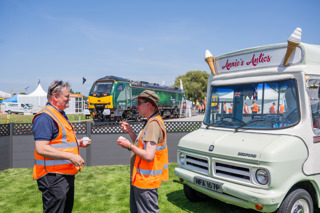











Login to comment
Comments
No comments have been made yet.